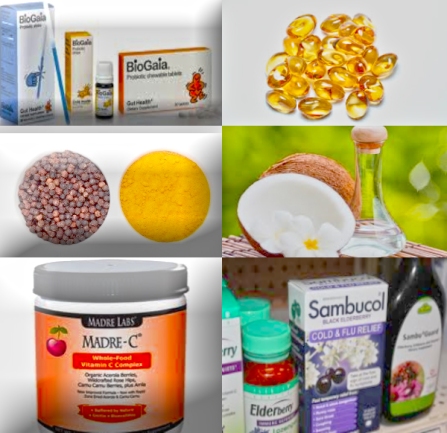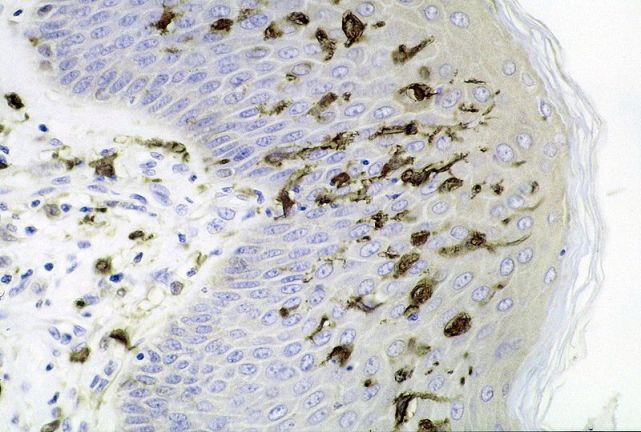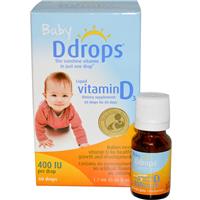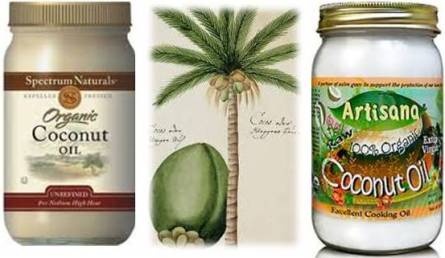For the first 30 years of my life, I thought my immune system was pretty awesome. I would fall sick 1-2 times a year, and the infection with fever and malaise would last maybe 3-4 days. Not too shabby, right?
Then, I discovered I was Vitamin D-deficient, and had probably been so all my life – my levels were around 16 ng/mL. On continuous supplementation to correct for this, my blood levels have held steady at 40-50 ng/mL. Many things changed subtly. My skin improved, I gained some badly needed weight, and interestingly, over the next 4 years, I never got really sick. Nasty infections would come around, but at the worst, I would be under the weather for a day – there was never a three-day bout.
Then, I had a baby. Via surrogacy, yes, but the first days were still mentally stressful. I did not appreciate how much so till I had my first 15-day cold, the first in recent memory. With a baby at home and the sleep deprivation of the first year, I quickly realized I needed MORE.
Now, I was already doing much more for my daughter, which I have covered here. I made sure that:
- She was vitamin D-replete: Vitamin D’s role in infection defense is, in part, through its requirement for making the anti-microbial peptides cathelicidin and beta-defensin-1, which form an important part of the first line of defense against infections. Overall, vitamin D is vital for optimal immune function, and children who fall ill repeatedly routinely turn out to be vitamin D deficient.
- She got a rather unique probiotic, Lactobacillus reuteri, which is interesting because it is the only Lactobacillus species (out of 10 examined) found consistently in a variety of birds and mammals, suggesting that it may play an important role in health. Indeed, it has been shown to protect against infections, and interestingly, protected against cancer by improving immunosurveillance in a single mouse study; now, one cannot at all conclude that this probiotic will have a similar effect in humans, and the effectiveness of Biogaia in protecting against cancer has sadly not been further explored, yet the results of this one study are intriguing. Overall, there have been many studies examining this bacterial strain in multiple contexts (protection against infections, dental carries, etc.), and the preliminary results overall indicate that this is a very good choice if one were attempting to use probiotics to improve immune functioning.
- She got plenty of lauric acid via virgin coconut oil in her formula: this fatty acid, which is most abundant of its type in breast milk, also has potent anti-microbial effects. I talk about them at length in this post.
Now, thanks to Linus Pauling, when people fall sick, they dive for the Vitamin C, and think they have done enough. While it appears to have some usefulness (anti-oxidant, anti-inflammatory and even anti-microbial properties), its effectiveness in as reducing infection severity and length may be limited by itself.
Basically, a MULTI PRONGED approach may work best to protect yourself against falling ill. I developed this arsenal after much thought:
- Vitamin D: Maintain repleteness (ideally, blood levels between 30-45 ng/mL) via continuous supplementation or sunblock-free sun exposure.
- Probiotics: I recommend the BioGaia probiotic (Lactobacillus reuteri) for maintenance (this has potential anti-microbial effects and protects against GI tract infections). When suffering from a GI infection, alternating BioGaia with a very different probiotic, Florastor (Saccharomyces boulardii, available as Econorm in India) will be more effective. Two points to emphasize: 1) Random, unstudied probiotic supplements that currently flood the market are likely to be utterly ineffective and a waste of money. 2) Florastor is very effective for stopping GI infections, and may be valuable adjunct to antibiotic treatment (please talk to a doctor about this, if prescribed antibiotics).
- Vitamin C: While getting this from food is best, if one wishes to take a supplement, a bio-available form (for example, Madre C, which contains acerola cherry and indian gooseberry extract) is recommended.
- Extra virgin coconut oil, which has anti-microbial and anti-viral effects.
- Omega 3 fatty acids: While these are mainly associated with roles in brain building and protecting from stroke/heart attacks and reducing pain, new evidence shows that they also have a role in immune functioning; specifically, they appear to affect B cell immunity. While the understanding of Omega 3s in the immune response is still fledgling, making sure your diet includes some Omega 3 intake (either through diet or supplementation) seems sensible.
- Elderberry Extracts: These, like turmeric, have been medicinally used for centuries. Their anti-viral effects have been shown in the case of influenza in mice, in birds, in vitro, and even in one very small human study.
- Turmeric with black pepper: Turmeric, which has used as folk medicine for centuries, has an eye-popping array of useful properties, including anti-inflammatory, anti-viral, anti-microbial, and anti-cancer effects. But despite all of these useful properties, even taken in vast quantities orally, it shows almost no effect because of the low solubility and very poor bio-availability of its component curcuminoids. There has been a lot of research aimed at addressing these issues. But sitting at home, what can you do? While this is by no means optimized, piperine, a component of black pepper, increases the blood levels of curcumin considerably by inhibiting its removal through the liver. There are two ways to get a good quantity of turmeric in your system:
- Turmeric home-brew: Add 1 tsp of turmeric + 0.25-0.5 tsp of fresh ground black peppercorns to a sufficient quantity of fat (I recommend coconut oil for lauric acid) to mix. Then add honey (manuka is a good choice) and eat the resulting paste, or mix with milk with or without adding honey.
- Bioavailable turmeric supplement containing liposome-encapsulated turmeric root extract + piperine (from black pepper) – go here.
I now prefer the bioavailable supplement to the turmeric home-brew as it is far more convenient, especially when ill or travelling – one should ideally take turmeric multiple times per day when trying to ward off infection.
Of these, Vitamin D if needed to correct deficieny, the Biogaia probiotic, vitamin C via food or supplementation, and Omega 3 fatty acids via food or supplementation can be taken regularly: most of these have functions that go beyond optimization of immune responses.
In contrast, elderberry and turmeric extracts should not be taken daily, ideally. A great many people have expressed interest in taking elderberry regularly, and I would have to advice against this stratagem, especially with elderberry: this is certainly not required for normal functioning, unlike Vitamin D, vitamin C, omega 3 fatty acids, and even probiotics (which may play a role in shaping the gut microbiome, which in turn has a tremendous effect on health). Elderberry extracts actually exert their anti-viral effects in part by inhibiting ribsome functioning,which means they affect protein production, and hence in theory could affect any rapidly dividing cell in a dose-dependent manner. They may exacerbate autoimmune diseases thanks to their ability to induce inflammatory cytokine production, and their long-term safety has not been studied.
Small (non-medicinal quantities) of turmeric in combination with black pepper can be taken daily by older people: this may be a particularly good idea for individuals with or at risk for metabolic syndrome. There is a wealth of literature on this, but I will highlight this analysis which suggests that it may be helpful in diabetics. If anybody wishes to take medicinal quantities of turmeric in a bio-available form for any number of conditions (cancer, osteoarthritis, other chronic pain conditions, metabolic syndrome, and so on), I would suggest that they do so in consultation with their doctor, as turmeric can interfere w/ certain medications. Memorial Sloan Kettering has an excellent resource page on turmeric. I should emphasize that turmeric is a potentially extremely useful supplement for cancer patients, as its anti-viral, anti-microbial, and anti-inflammatory effects may really help protect those with immune systems weakened by chemotherapy and radiation. It could also combat some of the mechanisms by which drug resistance develops, and it also is anti-angiogeneic, so it could help in the fight against cancer itself. However, as noted previously, some of the medications turmeric interferes with includes certain drugs used in cancer, so check with your doctor, please.
I do not advice that children be given turmeric + pepper or elderberry daily, though they can be given turmeric and elderberry if okayed by their doctor, if they are showing signs of infection.
Over the many years since I have written this post, I have had multiple threatened infections, most of which were (coincidence or not) staved off within a day by taking all of these in combination. If in case there has ever been a fever, that has gone within a 24-36 hour period. I have also tried these (absolutely safe) experiments on all my family members, and they claim all of these (especially the probiotic and the turmeric-in-milk-with-pepper home brew) have helped. All of this is done for my toddler daughter as well, and again, it really seems to help, especially the Florastor + BioGaia combination for GI infections. As she has gotten older, the bioavailable turmeric and elderberry have seemingly helped her get over her very rare infections astonishingly quickly.
More than reducing the incidence and severity of minor infections, these easy, safe, and relatively inexpensive strategies, if in play from an early point, may have a far more important role: to reduce the severity of illness following infection with the very nasty bugs (dengue viruses, EHECs, MRSA, Influenza A virus, malarial parasites, and so on) thus reducing the risk for hospitalization, a requirement for intensive care, or worse. The gravity of this point cannot be emphasized enough.
Two things should be emphasized:
None of this should be taken as a replacement for vaccination. The protection vaccines provide (including the flu vaccine, which reduces the risk for severe infection, hospitalization, or death from the flu) is tangible and very real. I vaccinate my child in addition to do all thing – we get yearly flu shots.
Elderberry and Turmeric can be taken while keeping your doctor in the loop. Everything covered here should NEVER CONTINUE be the sole form of care in a severe infection that is not improving. If you do not recover quickly, see your doctor and follow their advice, although you could continue to take turmeric and elderberry WITH whatever they prescribe, if okayed by them.
Many people have asked about sources of these, so here is a Where to Buy list:
ADULT SUPPLEMENTS:
- Vitamin D, adult
- BioGaia probiotic, adult chews
- Florastor (adult)
- Elderberry (adults)
- Bioavailable Turmeric
- Omega 3s/DHA (adults; fish oil form)
- Omega 3s/DHA (adults; vegetarian)
INFANT/TODDLER SUPPLEMENTS
- Vitamin D, infants
- BioGaia
- Florastor sachets (baby)
- Elderberry syrup (kids)
- Elderberry (gummies)
- OMEGA 3s/DHA (kids–fish oil form
- Omega 3s/DHA (gummy form)
- OMEGA3s/DHA (kids-vegetarian)
Disclaimer: This post contains affiliate links: As an Amazon Associate I earn from qualifying purchases. To get more information/interaction on the topics raised here, or to catch these supplements when they go on sale, join the Smart Savers Unite! group on Facebook







 s caprylic acid. This oil has been a traditional staple of many civilizations, and only in the last century, has incorrectly got a bad reputation for “increasing cholesterol.” That turned out to be a case of misinformation and misrepresentation that may have actually contributed to the increase in heart disease seen today, but that is a topic for another post.
s caprylic acid. This oil has been a traditional staple of many civilizations, and only in the last century, has incorrectly got a bad reputation for “increasing cholesterol.” That turned out to be a case of misinformation and misrepresentation that may have actually contributed to the increase in heart disease seen today, but that is a topic for another post.